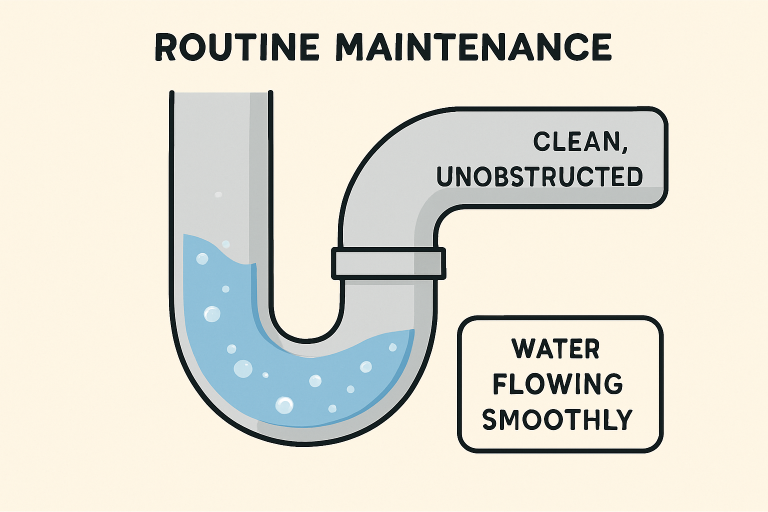Key Takeaways
- Routine drain cleaning can prevent costly plumbing problems and major disruptions.
- The frequency of drain cleaning depends largely on household size, the age of the plumbing system, and the frequency of fixture use.
- Early detection of drain issues helps prevent more extensive repairs down the road.
- Simple prevention strategies can help you keep drains clear between professional cleanings.
Maintaining your home’s plumbing system in optimal condition is crucial for a hassle-free lifestyle. One of the most overlooked aspects of home maintenance is drain cleaning. Regularly cleaning your drains prevents stubborn clogs, diffuses unpleasant odors, and supports consistent water flow—saving you time, money, and stress in the long run. Many homeowners often wonder, "How frequently should I book a drain cleaning service near me?" The answer depends on several factors unique to your household and plumbing setup. The scheduling of drain cleaning is influenced by a range of factors, from daily habits to the age of your pipes. Being proactive about this crucial maintenance task can help you avoid sudden and costly plumbing emergencies. In this guide, you’ll discover how to determine the optimal cleaning schedule for your home and learn how to identify warning signs before they escalate into larger issues.
General Recommendations for Drain Cleaning Frequency
Most plumbers recommend scheduling a professional drain cleaning every one to two years for a typical household. This annual or biannual interval serves as a baseline that helps clear minor buildup before it develops into severe blockages that could affect your entire plumbing system. If your household experiences high water use or recurring minor clogs, more frequent cleanings may be necessary, especially in high-use areas like kitchens or bathrooms. This is especially true for main sewer lines, as undetected blockages can cause widespread issues.
Preventive cleaning is a wise investment. According to experts cited on HGTV, regular maintenance not only extends the lifespan of your plumbing but also helps avoid health risks associated with stagnant water and bacteria-laden backups.

Factors Influencing Drain Cleaning Frequency
The proper schedule for professional drain cleaning services hinges on several variables. Understanding these factors will help you determine how often your plumbing should be inspected or cleaned:
- Household Size: Larger families or homes with frequent guests will naturally put more stress on their drainage system, potentially leading to more debris and faster buildup.
- Usage Habits: If your household often disposes of grease, coffee grounds, or starchy foods through the kitchen sink, you’ll likely need drain cleaning more frequently. The same is true if you use bathroom drains for hair removal or if you have a lot of soap residue.
- Plumbing Age and Material: Older homes typically have pipes that are more susceptible to buildup and corrosion. Cast iron and galvanized steel pipes, for example, are prone to inside layering that can narrow the diameter of the pipe over time.
Recognizing Warning Signs
Even with the best preventive care, it’s crucial to recognize early warning signs that indicate it’s time to schedule a professional drain cleaning. Addressing these red flags right away can prevent minor blockages from evolving into major plumbing disasters:
- Water is draining slowly from sinks, bathtubs, or showers.
- Repeated clogs in the same drain, even after you attempt to clear them.
- Gurgling, bubbling, or unusual sounds coming from your drains as water empties.
- Persistent or worsening sewage or musty odors, especially after rain or plumbing usage.
- Water is backing up into sinks or tubs during washing or after flushing toilets.
- Simultaneous clogging of several drains in your home suggests a main line issue.
DIY Tips for Maintaining Your Drains Between Professional Cleanings
While it’s vital to book routine professional cleanings, there are simple steps you can take between visits to keep your drains in top shape:
- Run Hot Water: Flushing your kitchen drain with hot water after use helps prevent grease and soap buildup on pipe walls.
- Baking Soda and Vinegar: Pouring a half cup of baking soda followed by one cup of vinegar down the drain once a week can help break up debris and neutralize odors.
- Use Sink Strainers and Drain Covers: These tools trap hair, food particles, and other debris, substantially reducing the risk of clogs.
- Avoid Chemical Drain Cleaners: Many over-the-counter cleaners can cause pipe erosion and are not suitable for older homes with delicate plumbing systems, according to Family Handyman.
Conclusion
Prioritizing routine drain cleaning is essential to maintaining a reliable and healthy plumbing system. By monitoring factors such as household size, usage habits, and the age of your plumbing, and by staying alert for telltale signs of blockage, you can tailor an effective cleaning schedule for your home. Don’t wait for an emergency—proactive maintenance is far more affordable, effective, and less disruptive than emergency repairs. Stay vigilant, and your plumbing will thank you!



No comments:
Post a Comment
I love reading and responding to comments but in order to get my reply you must ensure you are NOT a no-reply blogger. If you are, here are some quick steps to change that!
1. Go to the home page of your Blogger account.
2. Select the drop down beside your name on the top right corner and choose Blogger Profile.
3. Select Edit Profile at the top right.
4. Select the Show My Email Address box.
5. Hit Save Profile.